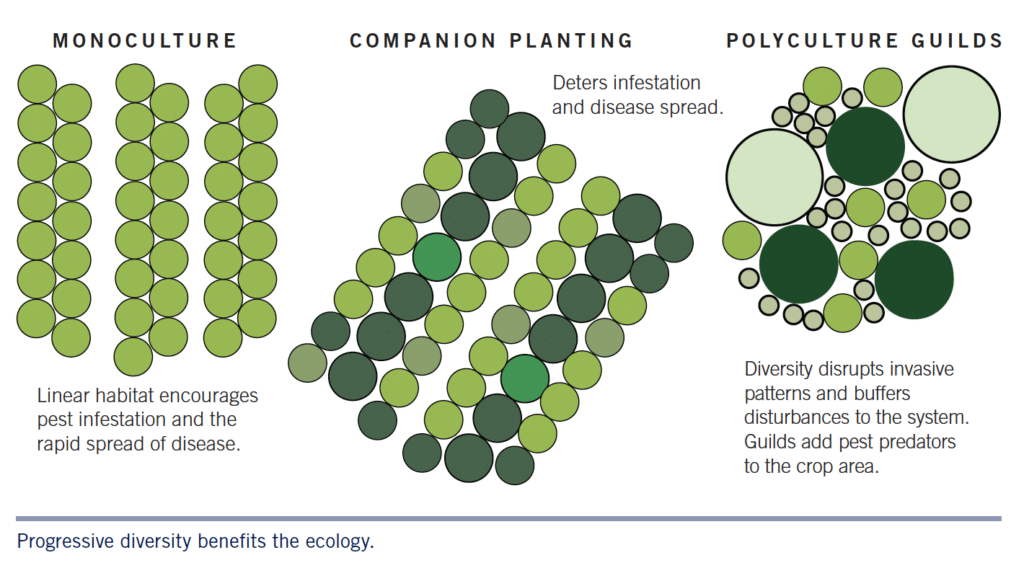What is a Plant Guild?
Technically speaking, a plant guild is “a beneficial grouping of plants that support one another in all their many functions,” and “support animals and humans for all their food, medicine, and utility needs.”

Ok, but…what exactly does that mean and, more importantly, how do you create a guild that is right for your food forest or permaculture project?
Enter three plant experts and permaculture designers, Wayne Weiseman, Daniel Halsey, and Bryce Ruddock, who have it all figured out and are in the mood to share.
“Each niche, yard, lot, or field has a long list of potential plants that will thrive there, and it is our task to define them, and design an ecosystem to support our and nature’s abundance,” write the authors.
Their book, Integrated Forest Gardening: The Complete Guide to Polycultures and Plant Guilds in Permaculture Systems is the first of its kind and will be of immeasurable benefit to permaculturalists of all abilities for years to come. A comprehensive book about plant guilds that answers specific questions like how to actually configure a guild, how to select the plants, what function each plant serves, and more.

Called “a rich feast of nature love” by Peter Bane (publisher, Permaculture Activist), Integrated Forest Gardening benefits readers of any scale. Whether you are a permaculture designer and professional grower, or backyard gardener completely new to the concept of permaculture, you’ll find a wealth of information along with extensive color photography and design illustrations in this detailed guide to developing what is most basic to any permaculture system—plant guilds.
Award-winning author Toby Hemenway believes, “Integrated Forest Gardening fills a major gap in the canon of permaculture books.”
“No longer is this subject mysterious and daunting,” writes Hemenway. “In this book we now have specific instructions for designing and installing multispecies plant groups. Chapter 7, which describes fifteen guilds and their plant members, is a golden nugget worth the price of the book alone.”

The idea of being able to take this book and replicate its principles in one’s own community, whether that be on a rural farm, or in a town or city, is exactly what the authors envisioned when they set out to write it. Their hope for this book is to cause a ripple effect, encouraging more people to embrace the vast potential of our plant world.
“Plant guilds are not limited to a few simple functions. You have ample opportunity to design and develop diverse guilds that focus on specific modalities: animal foods, oils, fibers, medicines, spices, endlessly. You might embed yield functions in a broad services guild, or you can design based on a particular theme that meets basic needs. Experiment, explore, ask yourself, What do I need for my family’s sustenance? Proceed from here.”
The guild concept often used is one of a “functional relationship” between plants–beneficial groupings of plants that share functions in order to bring health and stability to a plant regime and create an abundant yield for our utilization. In other words, it is the integration of species that creates a balanced, healthy, and thriving ecosystem. But it goes beyond integration. A guild is a metaphor for all walks of life, most importantly a group of people working together to craft works of balance, beauty, and utility.

